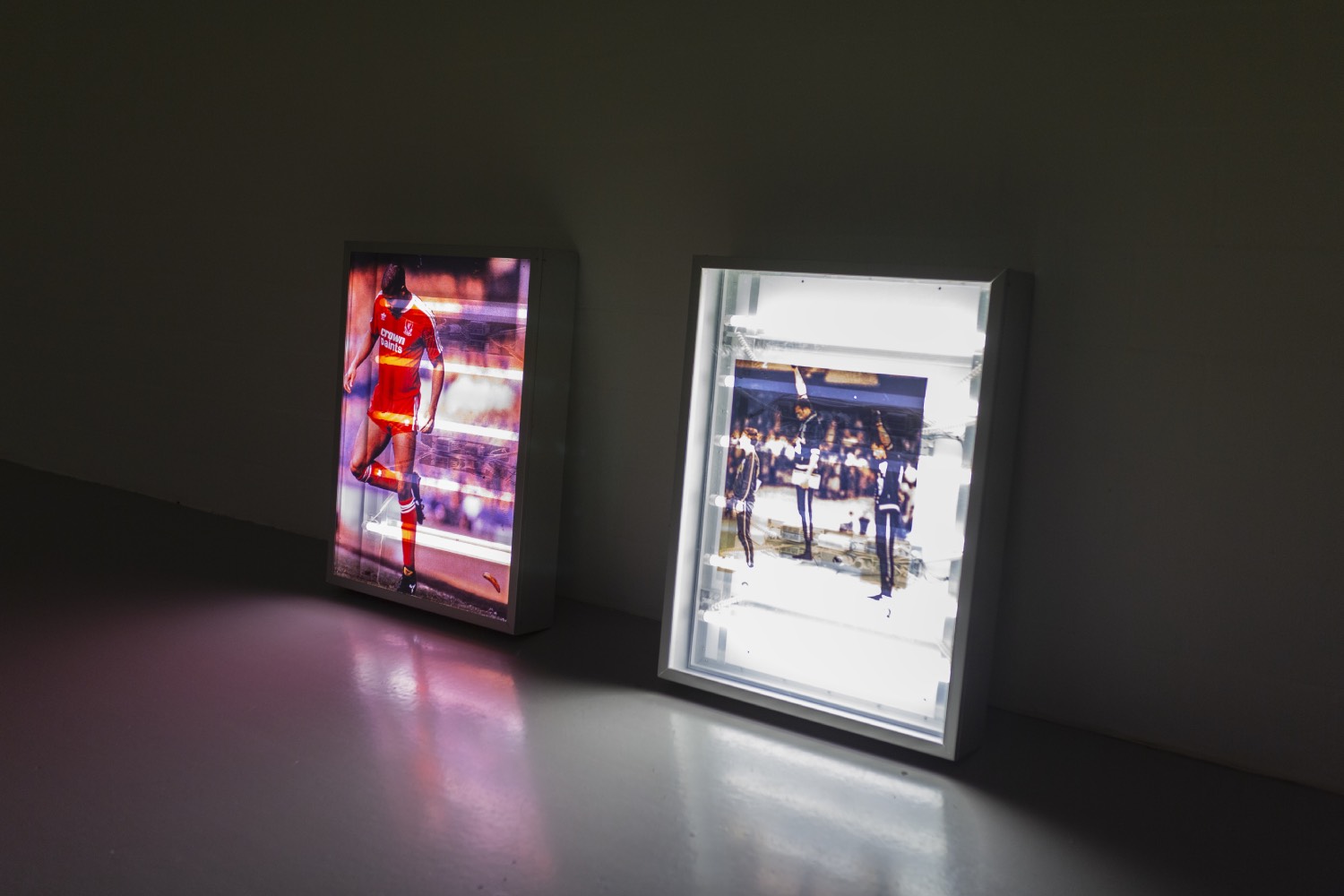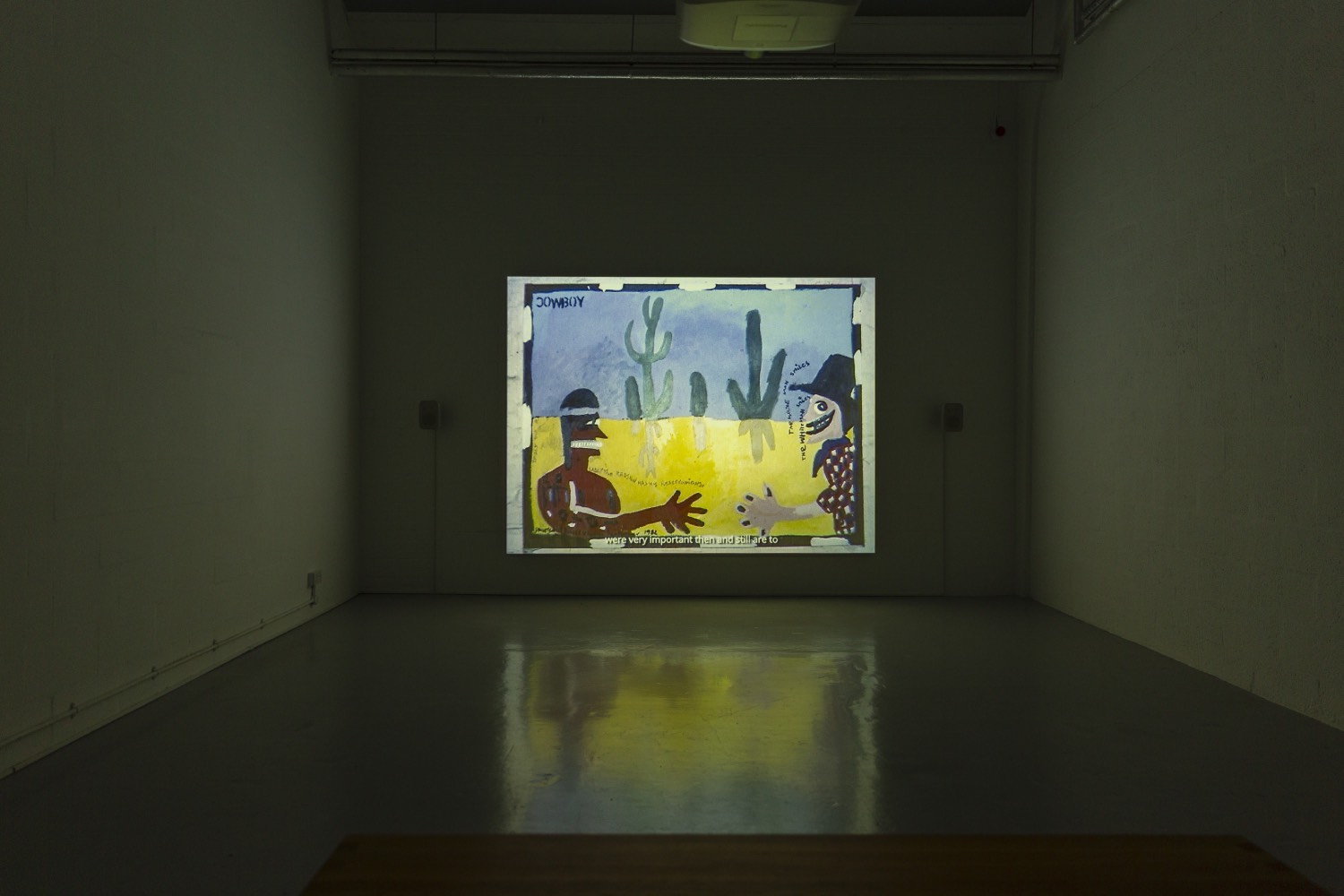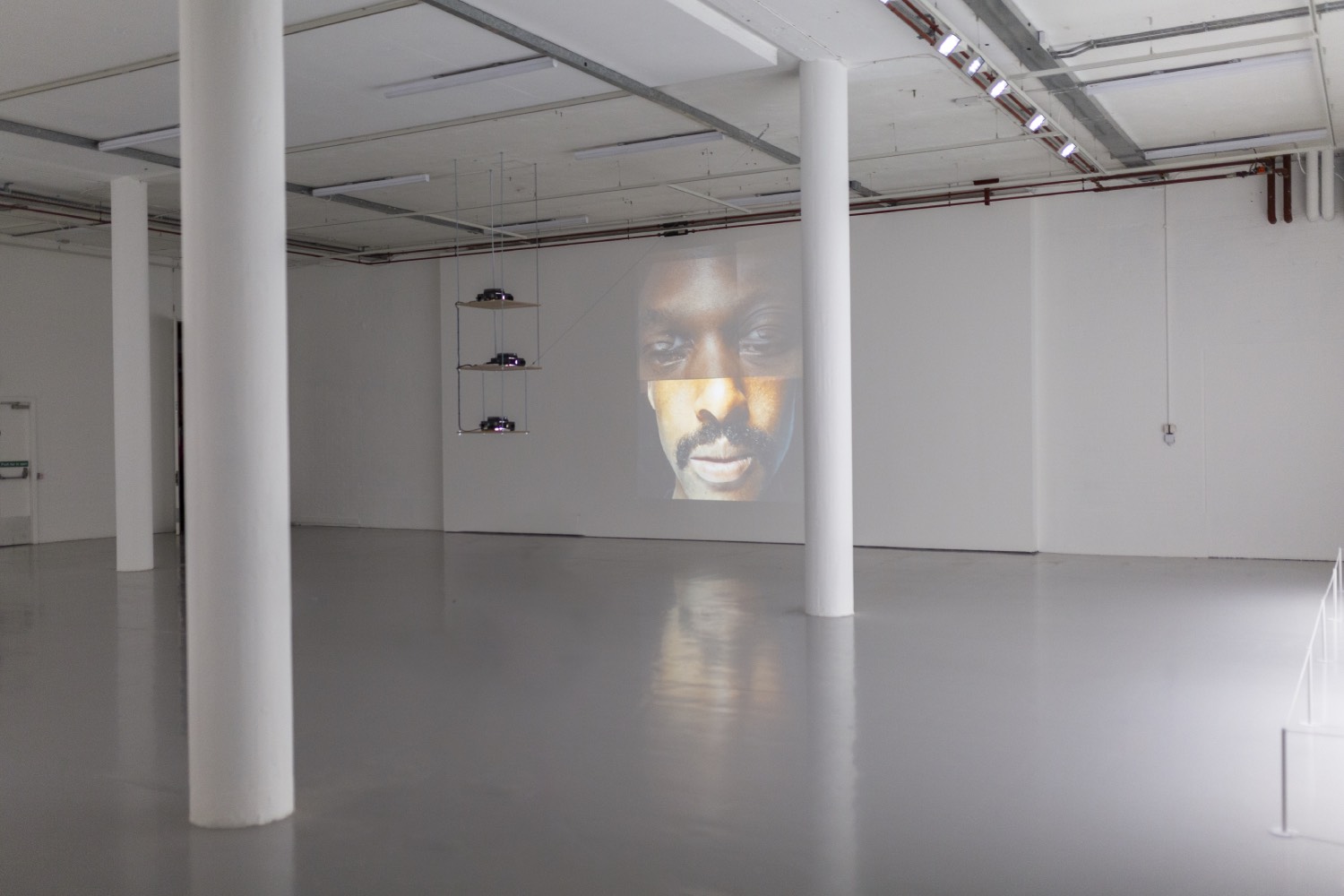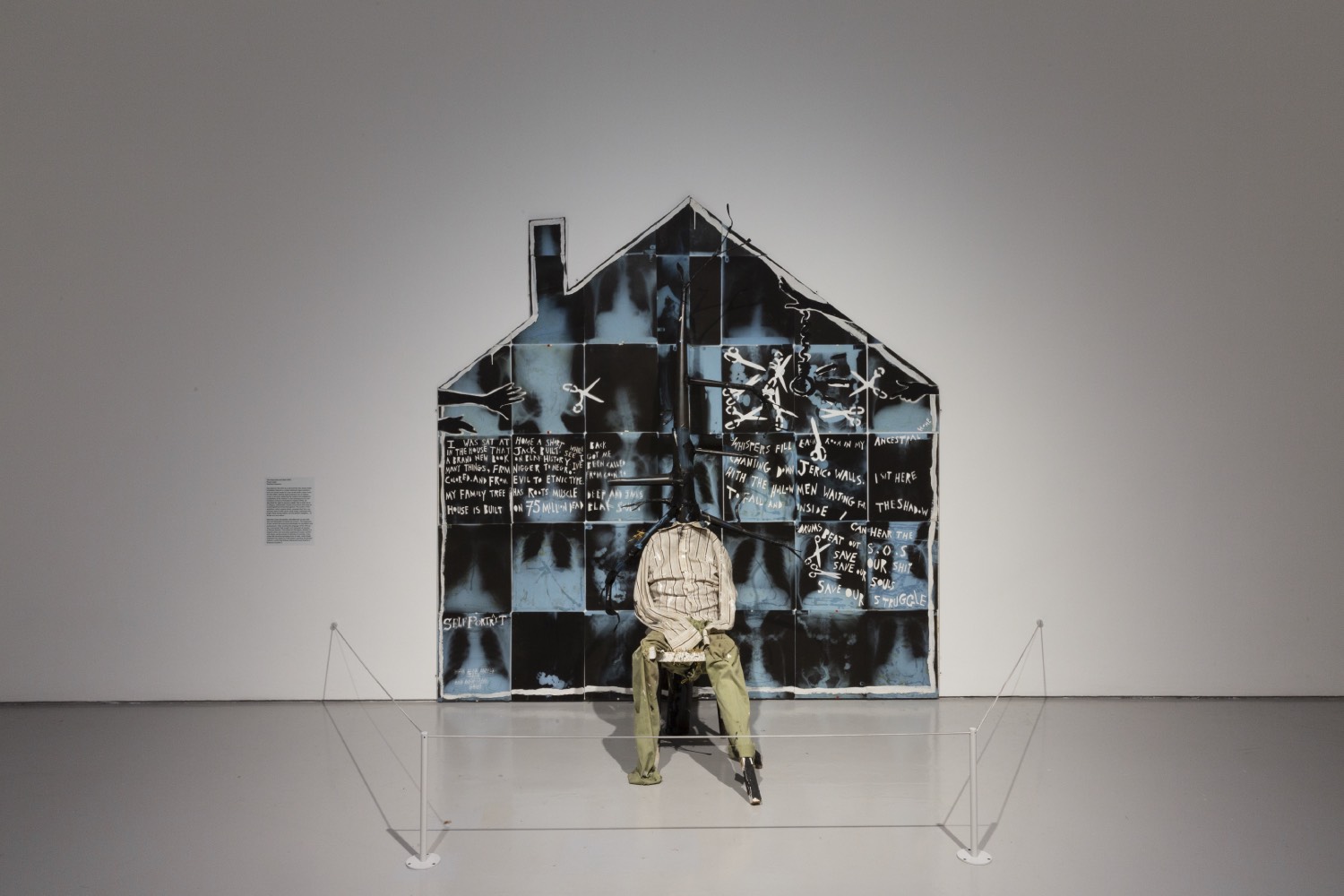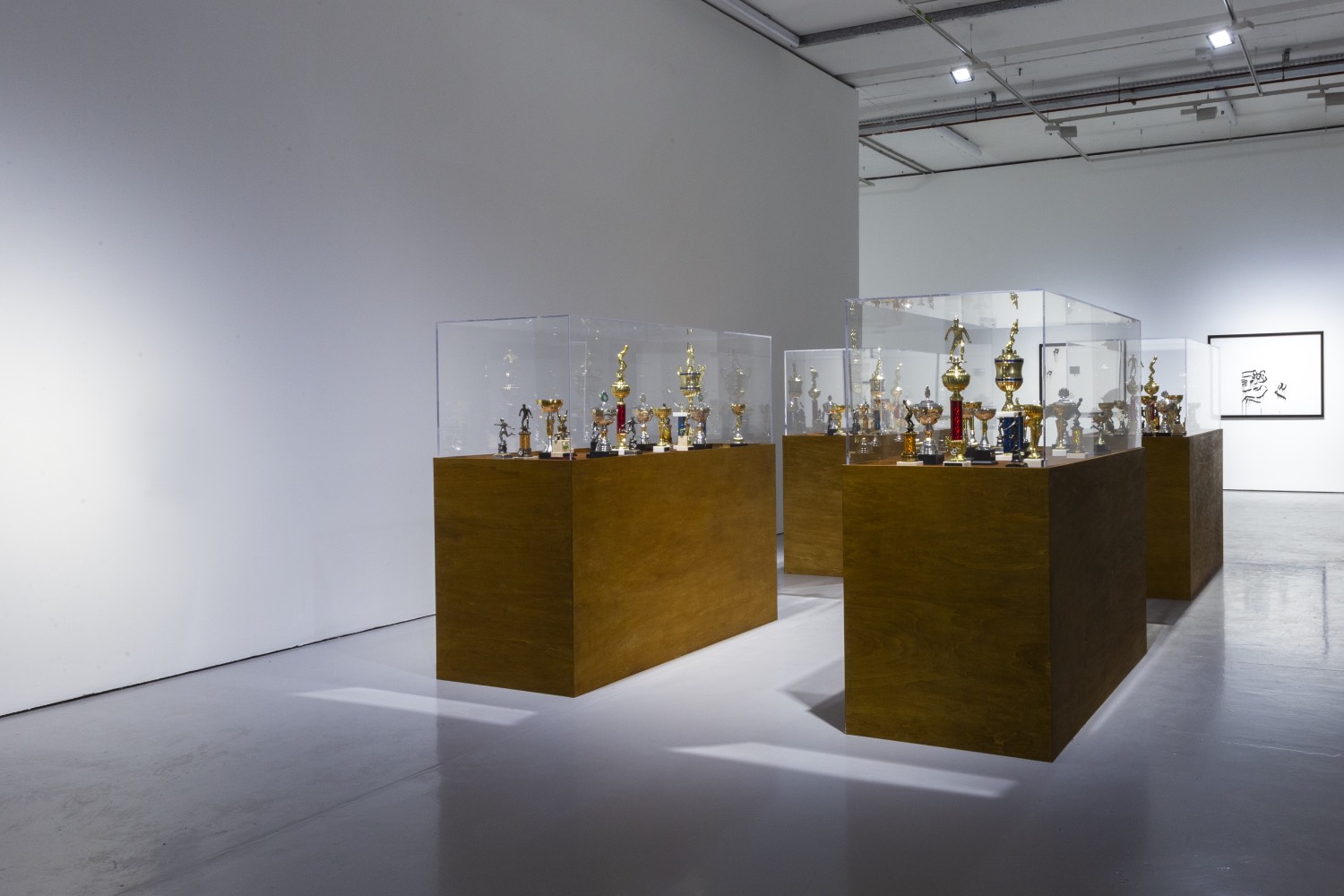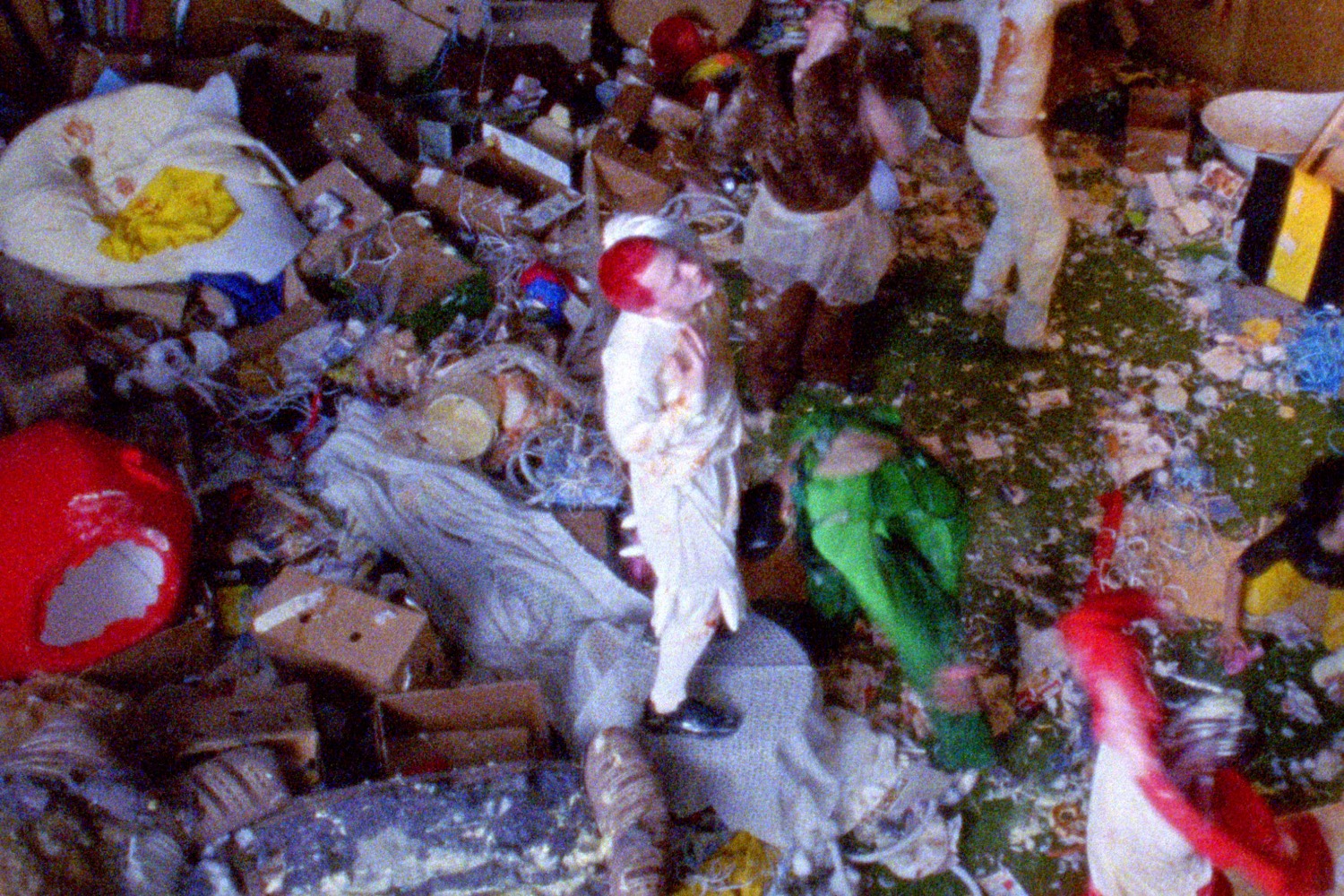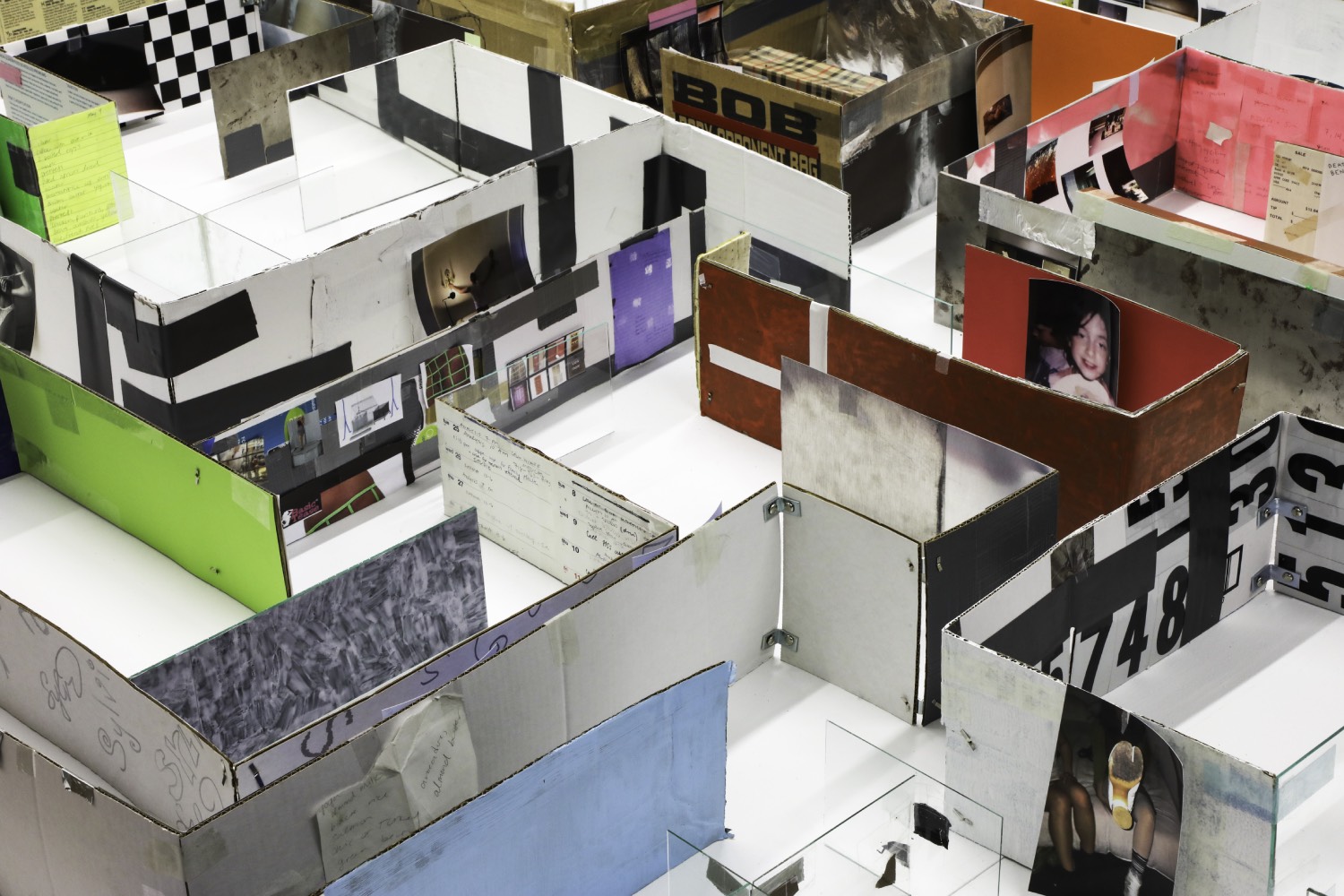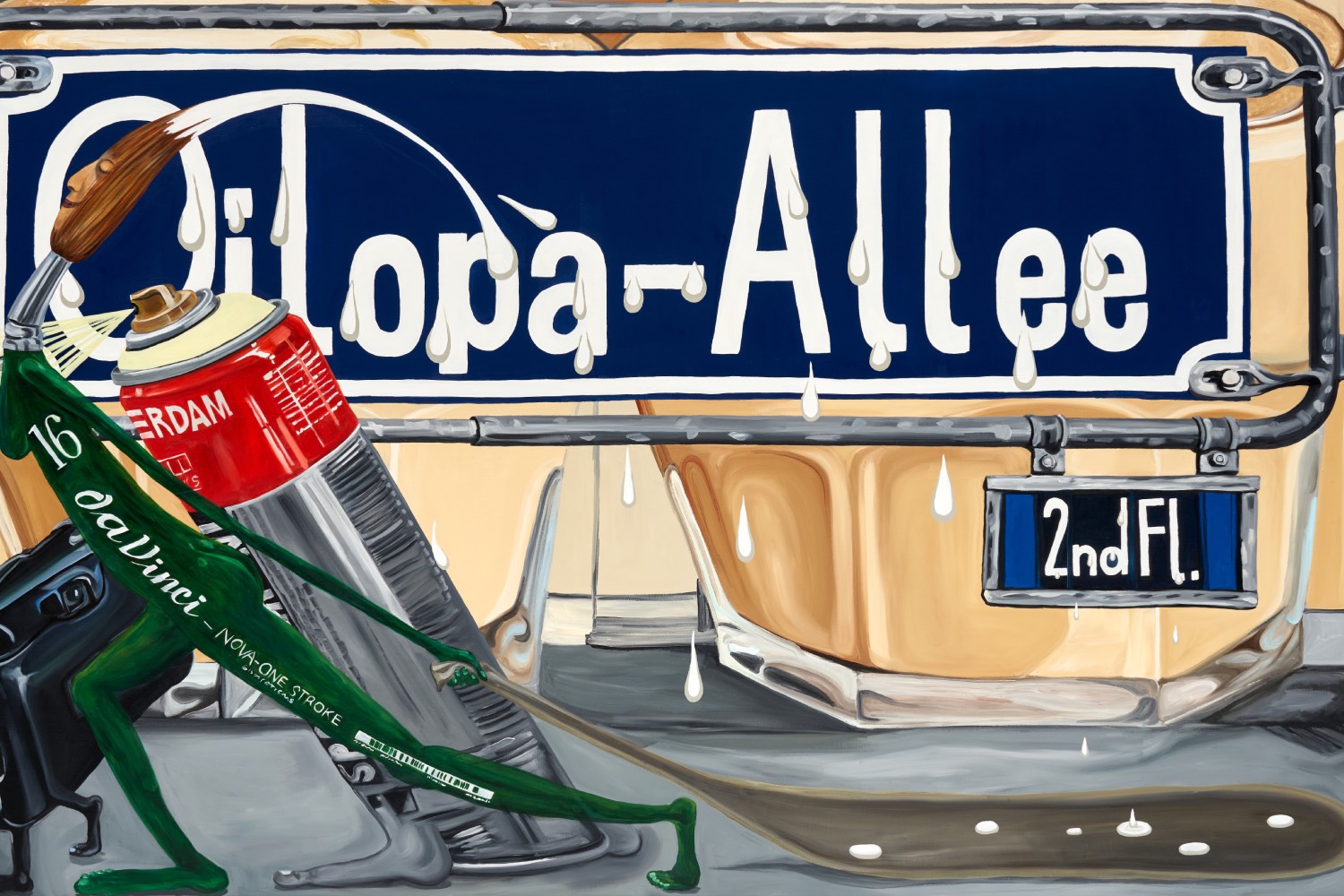Standing in front of Donald Rodney’s Visceral Canker (1990) — a seemingly living work, which this survey exhibition at Spike Island is titled after — I am reminded of the writing of Dodie Bellamy. In When the Sick Rule the World (2015), Bellamy writes, “The sick practice calm abiding. They say to themselves, ‘I feel so nauseous in my stomach, this means I’m alive, I am a living being, that I can feel this, and all these sensations and worries.’”
Visceral Canker consists of two wooden plaques with heraldic images, connected by silicone medical tubes that continuously pump theatrical blood. You can hear the work churn throughout the exhibition before you see it, making it seem alive and functioning, like a machine running at the heart of an institution. Specifically, one plaque features Queen Elizabeth I’s coat of arms, while the other displays the coat of arms of Sir John Hawkins. Hawkins, commissioned by Elizabeth I, was the first Englishman to participate in the Atlantic slave trade. This piece explicitly connects the histories of colonialism to the artist’s own biography, highlighting Britain’s deep-seated involvement in the slave trade. The “canker” of racism, a pressing and persistent reality in Rodney’s lifetime (1961–98), remains prevalent in Britain today. The sculpture epitomizes Rodney’s visceral approach and his critical examination of the enduring legacies of colonialism, particularly how Britain’s colonial past still determines much of contemporary life.
Donald Rodney was a pivotal figure in the British Black Arts Movement of the 1980s and 1990s in Britain. His work is renowned for its engagement with themes of race, identity, and the personal impact of illness, particularly sickle cell anemia, a genetic disease that predominantly affects people of African, Caribbean, Eastern Mediterranean, Middle Eastern, and Asian ancestry. Rodney worked across various forms and media, including painting, oil pastels on X-rays, photography, video, installation, and multimedia projects. Each medium served as a conduit for his exploration of complex sociopolitical issues and his experience with racial injustice and illness. The exhibition brings together his surviving works. Born in Smethwick, UK, to Jamaican parents, Rodney’s early life was shaped by the racial tensions and cultural transformations of postwar Britain. These contexts influenced his artistic practice as he sought to address the marginalization and stereotypes faced by the Black community. Each work in the show traces Rodney’s tender engagement with an evolving artistic research. His practice was never anchored in any one particular activity. While politically overt and explicit, it was never didactic.
Even though the exhibition seems to be curated chronologically, I was drawn to follow my own route. Walking through the gallery entrance and moving to the right I first encountered Doublethink (1992), one of Rodney’s later works. The sculpture takes the form of several display cabinets which contain an array of sporting trophies. In the early 1990s, Rodney collected more than a hundred inexpensive sporting and academic trophies, similar to those commonly given out in school sports day competitions in Britain or martial arts competitions: cheap, glitzy totems with silver or golden muscular men standing on top. These trophies are arranged on shelves housed in specially designed glazed and mirrored cabinets. Each trophy has an engraved plaque that contains confrontational, conflated, and fabricated statements of Black people’s histories, cultures, and relationships. The title of this challenging work is borrowed from a term in George Orwell’s 1984 (1949): “doublethink,” the act of simultaneously accepting two mutually contradictory beliefs as valid. “To know and not to know, to be conscious of complete truthfulness while telling carefully constructed lies, to hold simultaneously two opinions which cancelled out, knowing them to be contradictory and believing in both of them.” Here, Rodney points to the recognition and celebration of Black culture while, at the same time, systemic racism is sustained within the contexts he lived and operated within.
In the House of My Father (1996–97), one of Rodney’s most widely shown works, features a close-up photographic image of the artist’s hand holding a tiny sculpture of a house. This sculpture also exists as an independent work titled My Mother. My Father. My Sister. My Brother (1996–97). The house was crafted from pieces of Rodney’s own skin, removed during one of the many operations he underwent to treat sickle cell anemia. The fragile house brings to mind the body’s precarity, and the struggle for some to do what others take for granted.
The scope of this survey brings attention to the importance of this artist’s work and its influence on later generations of artists — a body of work negotiated by and through the artist’s body and his relationship to systemically unjust structures and institutions. The power of these artworks lies in how critically and politically relevant they remain today.

